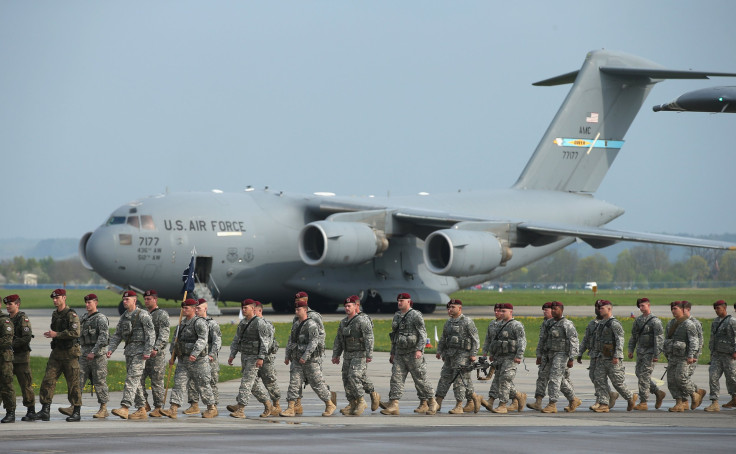US Military Base In Poland To Check Russian Aggression May Become Reality

The United States is considering the deployment of a military base near Kaliningrad, a Russian province sandwiched between Poland and Lithuania along the Baltic Coast. The base would come up in Poland.
The news was first reported by Russian newspaper Izvestia, which cited a source in Polish diplomatic circles, as Poland would be collaborating with the U.S. to set up the base. The plan to deploy a military base was due to the diminishing security and stability in the area due to Russian aggression and military expansion. No tentative date was mentioned as to when construction of the base will start.
While the exact location for the base was still being decided, one of the top contenders was the Polish city of Orzysz, located 170 kilometers (about 105 miles) from Kaliningrad, which already has the necessary infrastructure, including landfill, and geographically holds a strategically important position. In case of a military threat from Russia, U.S. troops will be in the position to defend not only Poland, but also Baltic countries, Lenta.ru reported.
Other options for the base include cities of Zagan and Dravsko-Pomorsk in western Poland, as well as the territory between the cities of Bydgoszcz and Torun.
Talks about setting up a U.S. military base in Poland hit the news circle when Polish President Andrzej Duda visited the White House in September. In a press conference following the meeting with Duda, President Donald Trump said he was considering setting up a permanent U.S. military base in Poland called “Fort Trump.”
“Poland is willing to make a very major contribution for the United States to come in and have a presence in Poland,” Trump said, Politico reported. “Poland would be paying billions of dollars for a base.”
He added: “The [Polish] president offered us much more than $2 billion to do this, and so we’re looking at it. We’re looking at it from the standpoint of, number one, military protection for both countries, and also cost, a term you don’t hear too often and you haven’t heard too often over the last 25 years.”
Meanwhile, on Wednesday, the Navy sent a guided missile destroyer USS McCampbell to a portion of the Sea of Japan that is claimed by Russia. It was part of a "Freedom of Navigation Operation,” the first of its kind to take place in that area since 1987.
"McCampbell sailed in the vicinity of Peter the Great Bay to challenge Russia's excessive maritime claims and uphold the rights, freedoms, and lawful uses of the sea enjoyed by the United States and other Nations," Navy Lt. Rachel McMarr, a spokesperson for the U.S. Pacific Fleet, told CNN in a statement.
The portion of sea where the warship sailed fell beyond the 12 mile-area from the Russian coastline that was guaranteed by international law. Hence, the U.S. does not recognize Moscow’s claim over that part of the sea, a navy official said.
"These operations demonstrate the United States will fly, sail and operate wherever international law allows," McMarr added. "That is true in the Sea of Japan, as in other places around the globe."
The Navy is also preparing to sail a warship into the Black Sea, in the light of Russia's seizure of Ukrainian ships and unlawful detention of the country’s sailors in the Kerch Strait, which connects the Black Sea and the Sea of Azov, another CNN report stated.
© Copyright IBTimes 2024. All rights reserved.












